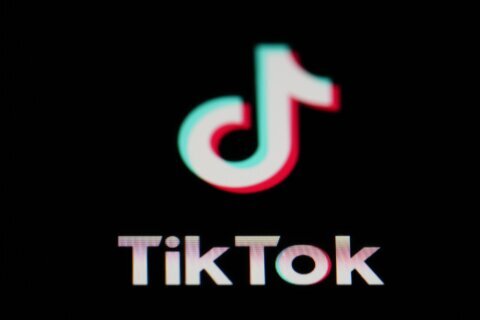One of the longest-standing debates in the investment industry is whether actively managed funds are better than passively managed index funds.
The former select their securities through a fund manager’s proprietary strategy, or based on quantitative rules, in an attempt to achieve a specific objective or outperform a benchmark.
The latter passively replicates the holdings of an index, which Jon Maier, chief investment officer at Global X ETFs, defines as: “a financial instrument designed to measure the performance of a specific market, asset class, sector or strategy.”
So, when it comes to the needs of retail investors, which one is better?
[Sign up for stock news with our Invested newsletter.]
Well, consider the latest results from S&P Dow Jones Indices’ SPIVA Scorecard, which measures the performance of actively managed funds worldwide against their benchmark indexes. For the U.S. market, SPIVA shows that as of June 30, 2023, 92.2% of large-cap funds underperformed the S&P 500 over the trailing 15 years.
The takeaway from SPIVA is that most retail investors and professional fund managers will likely fail to outperform an index consistently over the long run. “The idea behind index investing is ‘if you can’t beat ’em, join ’em,'” says Robert Johnson, professor of finance at Creighton University’s Heider College of Business. “For the vast majority of investors, the KISS mantra — ‘keep it simple, stupid’ — should guide their investment philosophy.”
Michael Wagner, co-founder and chief operating officer at Omnia Family Wealth, agrees with Johnson. “I stay sane by focusing on what I can control, and when it comes to investing, that’s generally three things: the risks I take, the expenses I incur and the taxes I pay,” he says. To keep these variables under control, few investment products do a better job than the humble index fund.
Jason Mountford, trend analyst at Q.ai, echoes this sentiment. “There aren’t many things you can directly control as an investor, but the major exception is the fees you pay,” Mountford says. “If you’re looking for a simple way to gain exposure to major traditional assets like the S&P 500, an index fund is a great way to do that at a low cost.”
By buying an index fund, investors can also alleviate the stress of predicting which stocks, industries and sectors are likely to outperform. Investors may occasionally score a lucky winning stock pick, but the risk of holding several losers is much higher. An index fund is therefore a safer bet.
Johnson cites a study by Arizona State University finance professor Hendrik Bessembinder that showed from 1926 to 2016, just 4% of publicly traded companies, or the top 1,000 stocks, accounted for the net gains of the entire U.S. stock market, with the remainder either matching or lagging behind the returns of “risk-free” Treasury bills.
“In other words, the returns of the market have been driven by a small percentage of big winners,” Johnson says. “For most, trying to pick winners ex-ante is a loser’s game, so the solution is to invest in diversified index funds where you don’t have to pick the winners.”
Here’s a look at 10 of the best low-cost index funds and exchange-traded funds, or ETFs, to buy:
| Index fund | Expense ratio |
| Fidelity 500 Index Fund (ticker: FXAIX) | 0.015% |
| BNY Mellon Core Bond ETF (BKAG) | 0% |
| Vanguard Total Stock Market Index Fund Admiral Shares (VTSAX) | 0.04% |
| Vanguard Balanced Index Fund Admiral Shares (VBIAX) | 0.07% |
| SPDR Portfolio MSCI Global Stock Market ETF (SPGM) | 0.09% |
| Vanguard Total World Stock Index Fund Admiral Shares (VTWAX) | 0.1% |
| SPDR S&P 500 ETF Trust (SPY) | 0.0945% |
| iShares U.S. Treasury Bond ETF (GOVT) | 0.05% |
| Schwab U.S. Dividend Equity ETF (SCHD) | 0.06% |
| Invesco Optimum Yield Diversified Commodity Strategy No K-1 ETF (PDBC) | 0.59% |
Fidelity 500 Index Fund (FXAIX)
“One of the primary benefits of index funds is their lower expense ratio in comparison to their actively managed counterpart,” Maier says. For low costs, few index funds on the market beat FXAIX. With an expense ratio of 0.015%, a $10,000 investment in FXAIX would cost an investor just $1.50 per year. For this fee, investors gain exposure to the holdings and returns of the S&P 500, which as noted earlier is extremely difficult for the majority of funds to beat over time. Like many Fidelity funds, FXAIX also has no minimum investment requirements or sales loads.
BNY Mellon Core Bond ETF (BKAG)
“Just as how stock market returns compound, the deleterious effects of high fees and transaction costs also stack up over time,” Johnson says. “In fact, the late founder and chairman of Vanguard John Bogle termed this phenomenon ‘the tyranny of compounding costs.'” To eliminate fund fees altogether, investors can buy BKAG, one of the few ETFs with a true 0% expense ratio. This bond ETF tracks the Bloomberg U.S. Aggregate Total Return Index, which provides exposure to a wide swath of U.S. Treasurys, mortgage-backed securities and investment-grade corporate bonds.
Vanguard Total Stock Market Index Fund Admiral Shares (VTSAX)
For a slightly higher, but still very low, expense ratio of 0.04%, investors can go broader than FXAIX by opting for VTSAX. This mutual fund expands on the 500 stocks held in the S&P 500 by tracking a version of the Dow Jones U.S. Total Stock Market Index. In effect, VTSAX adds another 3,400 or so mid- and small-cap stocks that comprise the remainder of the investable U.S. market. Because VTSAX is market-cap weighted, its historical performance has been similar to FXAIX. However, keep in mind that like many of Vanguard’s Admiral Shares funds, VTSAX requires a $3,000 minimum investment.
Vanguard Balanced Index Fund Admiral Shares (VBIAX)
“A passive indexing strategy isn’t necessarily devoid of meaningful investor participation — it’s not run on autopilot,” Maier says. “At the end of the day, an investor still needs to make active decisions for the portfolio, such as how much, and when, to buy.” To simplify matters, investors can opt for a fund like VBIAX, which tracks both the CRSP U.S. Total Market Index and the Bloomberg U.S. Aggregate Float Adjusted Index in a 60/40 allocation. By buying VBIAX, investors can shift their attention to tasks such as making consistent contributions and reinvesting dividends. VBIAX charges a 0.07% expense ratio.
SPDR Portfolio MSCI Global Stock Market ETF (SPGM)
“It is possible to build a simple, diversified portfolio with just two ETFs: a broad market equity index ETF and a diversified bond index ETF,” says Brian Huckstep, chief investment officer at Advyzon Investment Management. For the equity side, investors can pair an aggregate bond ETF like BKAG with a global stock ETF like SPGM. This ETF tracks the MSCI ACWI IMI Index and holds just over 2,700 market-cap-weighted stocks from around the world, spanning U.S., international developed and emerging equity markets. SPGM currently charges a 0.09% expense ratio.
[2023’s 10 Best-Performing Stocks]
Vanguard Total World Stock Index Fund Admiral Shares (VTWAX)
Investors who prefer mutual funds can use VTWAX as an alternative to SPGM. “All else being equal in terms of benchmark and fees, I always prefer a mutual fund,” Huckstep says. “This is because trading ETFs involves a bid-ask spread, which is an implicit cost that many people do not consider.” With VTWAX, investors gain access to over 9,700 global stocks, but at the cost of the fund’s net asset value, or NAV, at the end of the trading day. For those who want to avoid trading ETFs, mutual funds like VTWAX offer a great hands-off alternative. The fund charges a 0.1% expense ratio.
SPDR S&P 500 ETF Trust (SPY)
On the other hand, investors who want more features out of a low-cost index fund might like SPY. As the first U.S. ETF launched (it debuted on Jan. 22, 1993), SPY recently celebrated its 30th anniversary. Thanks to its first-mover advantage, the ETF has an incredibly high assets under management, or AUM, of roughly $393 billion. And thanks to its high liquidity, investors who want to explore advanced strategies such as options trading can make use of SPY while still benefiting from its low-cost index structure. Currently, the ETF charges a 0.0945% expense ratio.
iShares U.S. Treasury Bond ETF (GOVT)
Bond ETFs like BKAG contain an allocation to corporate bonds, which pay higher yields to compensate for their higher credit risk. As such, corporate bonds can be a good holding for income investors, but less so for low-risk investors. During periods of market volatility, corporate bonds can lose value. For a lower-risk, but lower-yielding bond index ETF, investors can opt for GOVT, which only holds AA-rated U.S. Treasurys. Short of a U.S. sovereign default or collapse of the Federal Reserve, GOVT has a virtually nonexistent risk of default. The ETF charges a 0.05% expense ratio.
Schwab U.S. Dividend Equity ETF (SCHD)
Even dividend investors can benefit from the low-cost structure of an index fund. A great pick here is SCHD, which tracks the unique Dow Jones U.S. Dividend 100 Index at a 0.06% expense ratio. SCHD’s index selects a portfolio of around 100 dividend stocks screened for quality traits, including dividend growth, free cash flow and return-on-equity metrics. The rigorous rules-based nature of SCHD’s index helps keep fees low and transparency high compared to actively managed dividend ETFs. Currently, the ETF sports a 30-day SEC yield of 3.8%.
Invesco Optimum Yield Diversified Commodity Strategy No K-1 ETF (PDBC)
A traditional stocks-and-bonds portfolio had one glaring weakness exposed in 2022 and 2023: vulnerability to rising interest rates and high inflation. To fix this, investors can allocate some alternative investments. A common choice here is broad commodities, which can be indexed passively via ETFs like PDBC. This ETF holds futures contracts across 14 commodities spanning the energy, precious metals, industrial metals and agricultural sectors by tracking the DBIQ Optimum Yield Diversified Commodity Index. PDBC charges a 0.59% net expense ratio and does not require a Schedule K-1 form to be filed for tax purposes.
More from U.S. News
7 Best Gold ETFs for Rising Interest Rates in 2023
6 of the Best High-Dividend ETFs
10 Best Low-Cost Index Funds to Buy originally appeared on usnews.com
Update 11/06/23: This story was previously published at an earlier date and has been updated with new information.







